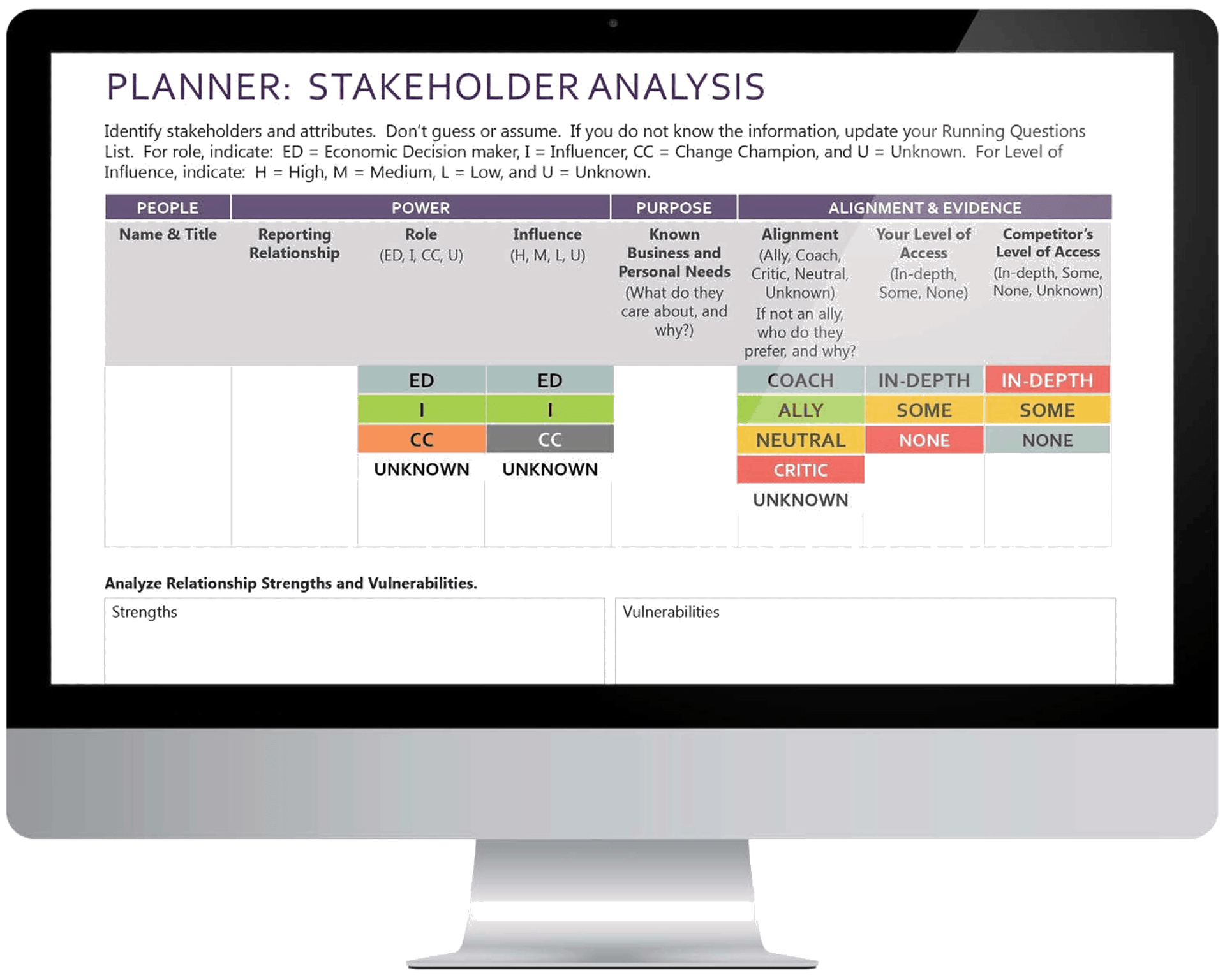8 Essential Components of Effective Account Planning Tools
Sales management

Effective Sales Account Planning Tools to Grow Existing Accounts
Growing existing accounts requires account planning tools that capture critical information, align with customer priorities, and deliver consistent value.
This is because sales professionals must first select the right customers, analyze their needs, draft an action plan, collaborate with the customer, and rise to the level of a trusted advisor to effectively execute an account growth strategy.
With so many elements in play, sales professionals need a way to bring structure to the account planning process. For this reason, sales teams need strong account planning tools and prosperous account strategy training to ensure the tools are put to good use.
Here, we look at the eight critical components of an effective account planning tool.
1. Industry Analysis
Examine external industry issues that may impact the customer. Industry trends reveal the customer’s motivation for change, whether it’s market changes, resource issues, competitive forces, or the regulatory environment. Isolate which of these areas is most pressing for the customer.
2. Customer Relationship Analysis
Effective account planning tools document your history with the customer and avenues for expansion like untapped business units and new divisions. This assessment should include a review of customer revenues and a summary of the “white space” identified in the account so that you can see areas in which you can add value.
3. Customer Strategy Map
Review the customer’s strategy to determine which of their objectives and initiatives connect with the solution’s capabilities. List the customer’s goals, challenges, and culture. Determine where you can provide the most value within the context of the customer’s plans.
4. Stakeholder Assessment
Categorize the stakeholders by their role, level of influence, and alignment with the solution. Take an inventory of your strengths and vulnerabilities. Clarify your key objective, whether it’s to strengthen the relationship, neutralize the competition, or increase the solution’s perceived value.

5. Competitive Assessment
Review your competitive position from the customer’s perspective. Develop ways to articulate your unique value. Determine how you will align with the customer to meet their needs in a way that outperforms the competition.
6. Running Questions List
Questions will emerge throughout the planning process. Keep an ongoing list of these inquiries and the steps needed to answer them. One important question can reveal information that drives the sale to closing.
7. Strategy Development
The information from the steps listed above must coalesce into a strategy. To do so, create a detailed list of specific goals and objectives that account for your solution’s capabilities. The drafted strategy must include potential opportunities, stakeholder relationships, and service needs.

Major Account Planning Tool
We support our clients’ training journey by offering tools that integrate into your CRM workflow to help sellers apply the skills they’ve learned, adapt to the needs of buyers, and close more deals.
Learn More8. Action Plan
Identify actions to reduce uncertainty, leverage strengths, facilitate consensus, remove or reduce vulnerabilities, and drive momentum to the sale. Determine which team members will take ownership in executing these steps. List potential obstacles and how to respond.
If the sales professional is going to guide the customer to the sale, they must know every turn along the way. Account planning helps anticipate those turns. The key is to become intentional with every step of the account planning process. Learn more by downloading the complimentary brochure: Major Account Planning Program Brochure.

Article: The 8 Essential Components You Need In Your Account Planning Tool
DownloadGet industry insights and stay up to date, subscribe to our newsletter.
Joining our community gives you access to weekly thought leadership to help guide your planning for a training initiative, inform your sales strategy, and most importantly, improve your team's performance.






